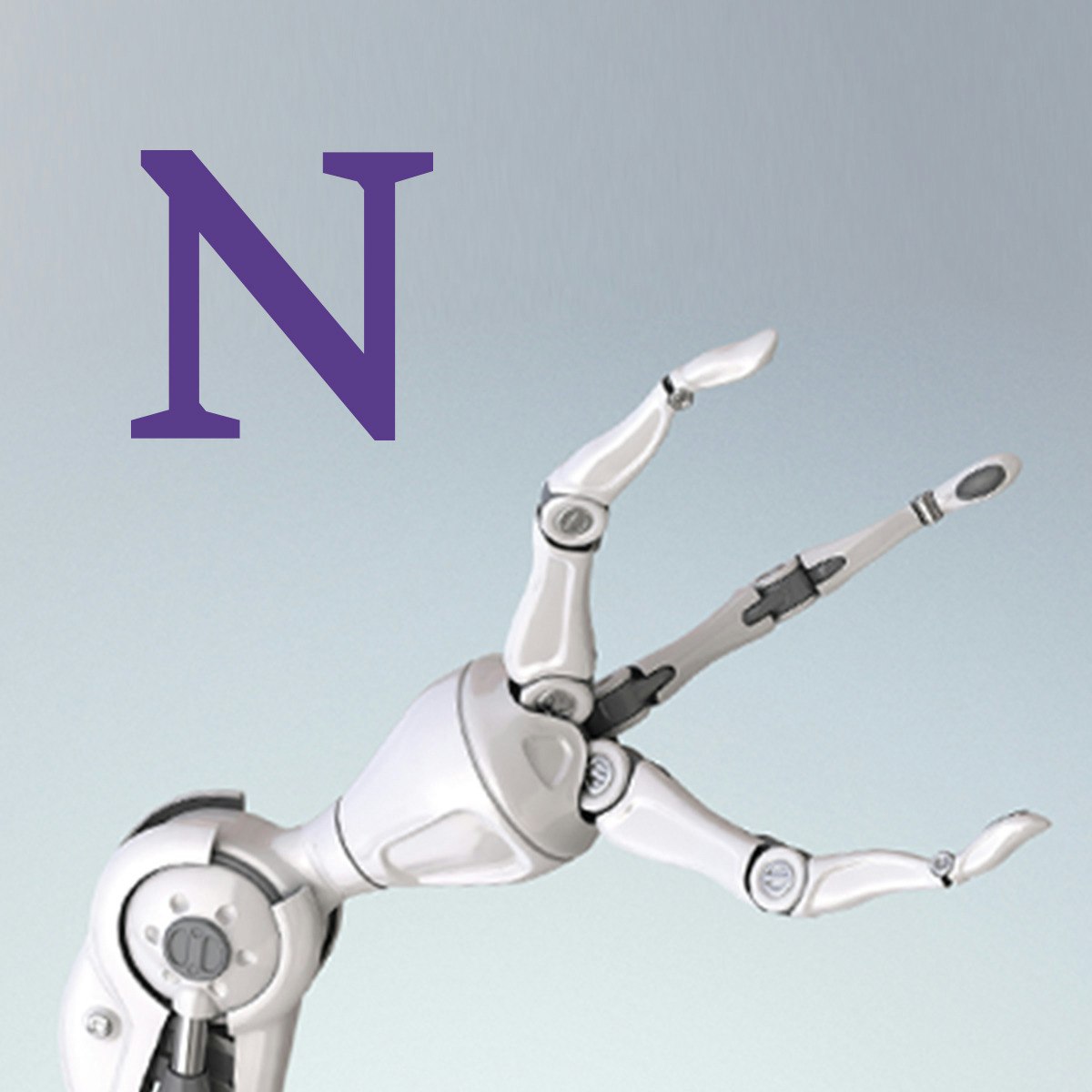
로봇이 어떻게 움직이는지 궁금하신가요? 로봇공학 커리어에 관심이 있으신가요? 로봇공학의 모든 하위 분야에서 사용되는 기초적인 수학적 모델링 기법을 열심히 학습할 준비가 되셨나요?
그렇다면, ‘현대 로봇공학: 역학, 계획 및 제어(Modern Robotics: Mechanics, Planning, and Control)’ 전문 과정이 여러분에게 안성맞춤일 수 있습니다. 이 전문 과정은 여섯 개의 짧은 강좌로 이루어져 있으며, 로봇공학 분야에서 경력을 쌓거나 심화 학습을 희망하는 수강생에게 적합한 과정입니다. 이 강좌는 맛보기가 아닙니다.
전문 과정의 '강좌 1, 로봇 동작의 기초'에서는 수직 다관절 로봇 메커니즘과 폐쇄형 체인 구조 로봇에 대한 로봇의 위치 및 자세, 즉 로봇 형상(Configuration)의 기본이 되는 내용을 다룹니다. 형상 공간(C-space), 자유도, 형상 공간 위상, 형상의 함축적 표현과 명시적 표현, 홀로노믹 및 비홀로노믹 제약조건도 함께 살펴봅니다. 또한 공간속도와 힘을 비틀림과 렌치로 표현하는 방법도 알아보겠습니다. 이 내용은 로봇 등 움직이는 모든 물체의 핵심을 다룹니다.
Read more
로봇이 어떻게 움직이는지 궁금하신가요? 로봇공학 커리어에 관심이 있으신가요? 로봇공학의 모든 하위 분야에서 사용되는 기초적인 수학적 모델링 기법을 열심히 학습할 준비가 되셨나요?
그렇다면, ‘현대 로봇공학: 역학, 계획 및 제어(Modern Robotics: Mechanics, Planning, and Control)’ 전문 과정이 여러분에게 안성맞춤일 수 있습니다. 이 전문 과정은 여섯 개의 짧은 강좌로 이루어져 있으며, 로봇공학 분야에서 경력을 쌓거나 심화 학습을 희망하는 수강생에게 적합한 과정입니다. 이 강좌는 맛보기가 아닙니다.
전문 과정의 '강좌 1, 로봇 동작의 기초'에서는 수직 다관절 로봇 메커니즘과 폐쇄형 체인 구조 로봇에 대한 로봇의 위치 및 자세, 즉 로봇 형상(Configuration)의 기본이 되는 내용을 다룹니다. 형상 공간(C-space), 자유도, 형상 공간 위상, 형상의 함축적 표현과 명시적 표현, 홀로노믹 및 비홀로노믹 제약조건도 함께 살펴봅니다. 또한 공간속도와 힘을 비틀림과 렌치로 표현하는 방법도 알아보겠습니다. 이 내용은 로봇 등 움직이는 모든 물체의 핵심을 다룹니다.
로봇이 어떻게 움직이는지 궁금하신가요? 로봇공학 커리어에 관심이 있으신가요? 로봇공학의 모든 하위 분야에서 사용되는 기초적인 수학적 모델링 기법을 열심히 학습할 준비가 되셨나요?
그렇다면, ‘현대 로봇공학: 역학, 계획 및 제어(Modern Robotics: Mechanics, Planning, and Control)’ 전문 과정이 여러분에게 안성맞춤일 수 있습니다. 이 전문 과정은 여섯 개의 짧은 강좌로 이루어져 있으며, 로봇공학 분야에서 경력을 쌓거나 심화 학습을 희망하는 수강생에게 적합한 과정입니다. 이 강좌는 맛보기가 아닙니다.
전문 과정의 '강좌 1, 로봇 동작의 기초'에서는 수직 다관절 로봇 메커니즘과 폐쇄형 체인 구조 로봇에 대한 로봇의 위치 및 자세, 즉 로봇 형상(Configuration)의 기본이 되는 내용을 다룹니다. 형상 공간(C-space), 자유도, 형상 공간 위상, 형상의 함축적 표현과 명시적 표현, 홀로노믹 및 비홀로노믹 제약조건도 함께 살펴봅니다. 또한 공간속도와 힘을 비틀림과 렌치로 표현하는 방법도 알아보겠습니다. 이 내용은 로봇 등 움직이는 모든 물체의 핵심을 다룹니다.
이 강좌는 ‘Modern Robotics: Mechanics, Planning, and Control’ 교재(Kevin M. Lynch, Frank C. Park, Cambridge University Press, 2017)를 바탕으로 제작되었습니다. 이 책을 구매하시거나 무료 pdf 견본을 사용하실 수 있습니다. 여러분이 원하는 언어(Python, Mathematica, MATLAB 중 선택)로 로봇공학 소프트웨어의 라이브러리를 구축하실 수 있습니다. 또한 무료 크로스 플랫폼 로봇 시뮬레이터 V-REP를 사용하여 집에서도 편하게 무료로 최첨단 로봇공학 작업을 수행하실 수 있습니다.
What's inside
Syllabus
현대 로봇공학 개요
전문 과정, 현대 로봇공학 코드 라이브러리, CoppeliaSim 로봇 시뮬레이터 및 Lightboard 영상 제작 도구를 소개합니다.
챕터 2: 형상 공간 (파트 1/2)
형상 공간, 강체와 로봇의 자유도
Read more
Syllabus
Good to know
Save this course
Activities
V-REP 로봇 시뮬레이터 활용하기
Show steps
실제 로봇 환경을 모방하는 로봇 시뮬레이션 소프트웨어인 V-REP를 사용하는 방법을 배워 실습을 보완합니다.
Show steps
-
V-REP 소프트웨어를 설치하고 실행합니다.
-
기본 V-REP 인터페이스와 컨트롤을 탐색합니다.
-
로봇 모델을 V-REP 환경으로 가져오거나 만듭니다.
-
로봇 운동을 시뮬레이션하고 분석하는 스크립트를 만듭니다.
Show all one activities
V-REP 로봇 시뮬레이터 활용하기
Show steps
실제 로봇 환경을 모방하는 로봇 시뮬레이션 소프트웨어인 V-REP를 사용하는 방법을 배워 실습을 보완합니다.
Show steps
- V-REP 소프트웨어를 설치하고 실행합니다.
- 기본 V-REP 인터페이스와 컨트롤을 탐색합니다.
- 로봇 모델을 V-REP 환경으로 가져오거나 만듭니다.
- 로봇 운동을 시뮬레이션하고 분석하는 스크립트를 만듭니다.
Career center
Robotics Engineer
Control Systems Engineer
Mechatronics Engineer
Manufacturing Engineer
Systems Engineer
Mechanical Engineer
Electrical Engineer
Computer Engineer
Product Designer
Software Engineer
Quality Assurance Engineer
Data Scientist
Operations Research Analyst
Industrial Engineer
Project Manager
Reading list
Share
Similar courses
OpenCourser helps millions of learners each year. People visit us to learn workspace skills, ace their exams, and nurture their curiosity.
Our extensive catalog contains over 50,000 courses and twice as many books. Browse by search, by topic, or even by career interests. We'll match you to the right resources quickly.
Find this site helpful? Tell a friend about us.
We're supported by our community of learners. When you purchase or subscribe to courses and programs or purchase books, we may earn a commission from our partners.
Your purchases help us maintain our catalog and keep our servers humming without ads.
Thank you for supporting OpenCourser.



